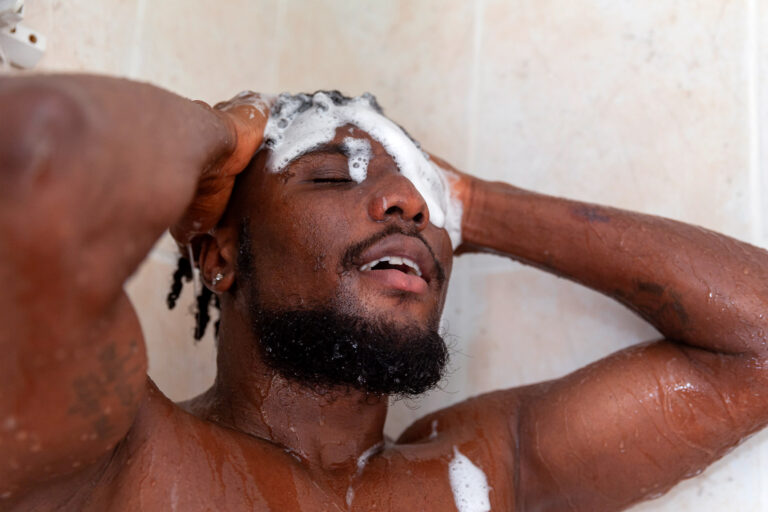Unlike hand washing, which we all do to minimize exposure to dirt and germs, keeping your hair clean and healthy is important.It’s not just a matter of practicality. For most people, hair care is about hygiene as well as confidence and self-expression.
However, not all shampoos are created equal, so it’s important to understand the ingredients in your cosmetics and choose products that are good for you and your hair.
Many shampoos often have the same basic ingredients for cleaning the scalp and hair, says Mayo Clinic dermatologist Dawn Marie R. Davis, MD. However, other ingredients vary widely depending on the brand and type of shampoo, including shampoos for dry or oily hair and cleansers for curly hair.
Understanding these ingredients and knowing what to watch out for and what to avoid will help you make informed decisions about the products you use.
Shampoo ingredients to avoid
There are some common ingredients in shampoos and other common beauty and hygiene products that you should avoid.
Please note that a more expensive product does not automatically mean higher quality raw materials. Also, don’t be fooled by the smart packaging design on the front of the bottle. Products that are advertised as natural, organic, or hypoallergenic may contain ingredients that may be harmful to your health or simply not good for your hair, scalp, or environment. there is.
If you see any of the following ingredients on the label, you may want to choose a different shampoo.
Sodium laureth sulfate or SLS. SLS, often referred to simply as “sulfate,” is a common detergent and cleaning agent found in many personal care products, says Dr. Davis. This ingredient provides the lather-like quality that many people expect from shampoo. However, Dr. Davis says SLS can cause skin and eye irritation, especially in people with sensitive skin. Even for those who tolerate SLS in products, sulfates can irritate hair and strip it of its natural oils, often making it drier, frizzier, and more brittle over time. . Parabens. These are a group of chemicals used as preservatives in many cosmetic products. Common paraben chemicals include methylparaben, propylparaben, butylparaben, and ethylparaben. Research has linked paraben exposure to many health risks, including skin and breast cancer, reproductive problems, endocrine disruption, neurotoxicity, and hormonal imbalances. Although the Food and Drug Administration (FDA) does not regulate most ingredients found in cosmetics, the European Union has banned the use of certain parabens in cosmetics since 2014. Chemicals last forever. Chemicals found in thousands of everyday products, including shampoo, cosmetics, clothing, plastic packaging, and cookware, pose serious and permanent health risks. As the name suggests, permanent chemicals break down very slowly, if at all, and can affect heart health and cholesterol, suppress the immune system, and increase the risk of kidney and testicular cancer. and may contribute to complications during pregnancy. Check all your cosmetics for ingredients called perfluoroalkyl and polyfluoroalkyl (PFA) and avoid them. Triclosan. Studies have linked the antibacterial agent triclosan to hormonal disruption and the development of resistant bacteria. Although the FDA has banned the use of triclosan in antibacterial soaps and hand washes, the ingredient is still used in other products such as shampoos, toothpastes, lotions, and deodorants.
Ingredients required for shampoo
Dr. Davis says a good shampoo really depends on the person, their hair texture, and the condition of their scalp. However, consider shampoos that incorporate hydrating plant-based ingredients, such as shea butter, argan oil, and coconut-derived ingredients, to lock in moisture and nourish your hair while providing a gentler cleanse. You might consider it. “Many people prefer shampoos that contain oils to prevent frizz and reduce tangles,” adds Dr. Davis.
Some people choose to cleanse their hair with basic single-ingredient or limited-ingredient options. For example, mixing baking soda with water or diluted apple cider vinegar can be a more gentle way to cleanse your hair and scalp. These methods are often referred to as “no-poo” and were popularized by black women and women of color with textured hair. kinds. These options will clean your hair, but the no-poo options won’t lather. This can be an advantage or disadvantage depending on your preference. In any case, apple cider vinegar in particular is a good low-cost option, since it not only effectively cleanses the scalp and hair, but also conditions it at the same time. Finally, apple cider vinegar has natural antifungal properties, making it a good option for people with dandruff.
Finally, Dr. Davis says there are many shampoo options for people with scalp issues. “We recommend ketoconazole for dandruff. Salicylic acid and coal tar are also effective options for skin problems such as seborrheic dermatitis, eczema, and psoriasis.”
Keep your shampoo simple
With so many different materials and products out there, it can be difficult to choose, but remember to keep it simple. Read labels carefully, know what ingredients to look for, and use some trial and error to find what works best for you and your budget.
If you have a specific scalp or hair condition, or simply want guidance on which products are right for you, Dr. Davis recommends consulting a dermatologist to explore your options.
Related reading
Mayo Clinic Self-Care Guide, 7th Edition
Nearly 20 years ago, Dr. Philip T. Hagen had a vision to develop a Mayo Clinic guide for consumers that would help people take control of their health. He called on his colleagues to share their expertise on more than 150 topics. Now, that number is even higher…
Find more content from Living Well, including articles, podcasts, videos, and more.
See Living Well

